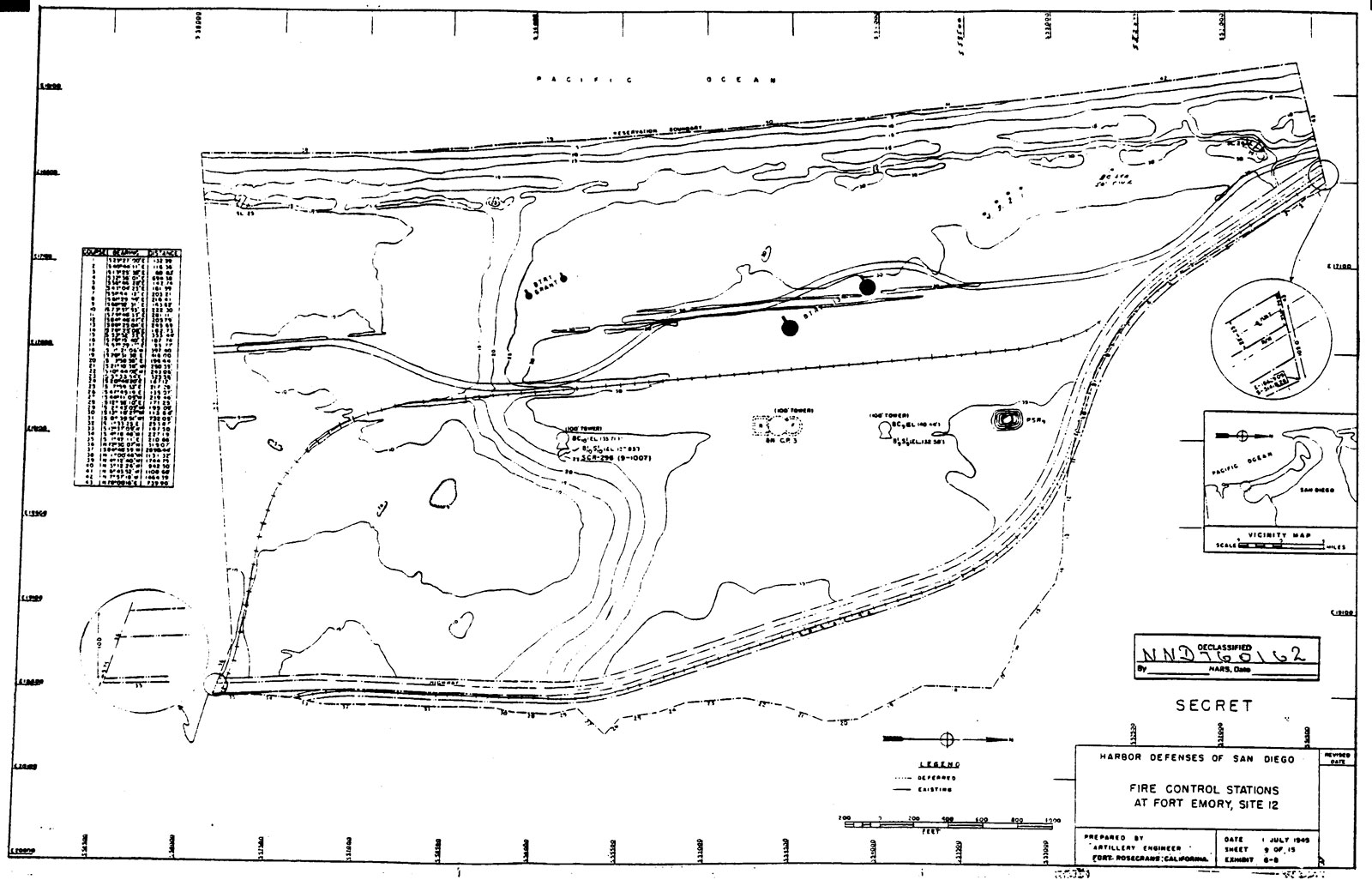In view of the concentration of defenses at Coronado Heights, i.e. Battery Imperial, Battery Grant and Battery Construction No. 134, the San Diego Chamber of Commerce asked Secretary of War Henry L. Stinson to name it Fort Emory, in honor of Brigadier General William H. Emory. Emory had arrived in San Diego in 1846 with the Kearny command to survey the new international boundary. The Chamber of Commerce believed that it was due to Emory's representations that the boundary was placed south of San Diego Bay. The War Department agreed and in December renamed the Coronado Heights Military Reservation Fort Emory, which became a sub-post of Fort Rosecrans, as was Fort Pio Pico. Today this facility is part of the Navy Radio Receiving Facility Imperial Beach.
The War Department acquired fee simple title to the site, subject to existing utility easements, following declarations of taking, on 19 November 1941 (19 acres), 16 October 1942 (412.14 acres), and 2 November 1943 (126.8 acres). In addition, two perpetual railroad right-of-ways were concurrently obtained, totaling 2.26 acres. Portions of the site were initially under U.S. Army control as Fort Emory and were transferred to U.S. Navy on 18 April 1944 (119 acres) and 16 August 1950 (412.14 acres).
The land was initially used as part of Fort Emory, Harbore Defenses of San Diego. It was later acquired by the Army Air Forces as a site for a Very High Frequency (VHF) aid to navigation site, including housing for enlisted personnel. Subsequent U.S. Navy use of the site included a communication station and radio direction finder station. Details of early use of the site are not known, but current use of the site is NAVRADRECFAC (Naval Radio Receiving Facility), Imperial Beach, which is an active current operation encompassing all the above-described acquisitions. There are current encumbrances and outgrants totaling 361.41 acres.
Other Online Histories
|
|
|
|
|
|
|
|
|
|
|
|
|
|
|
|
|
|
|
|
|
|
|
|
|
|
|
|
|
|
|
|
|
|
|
|
|
|
|
|
|
